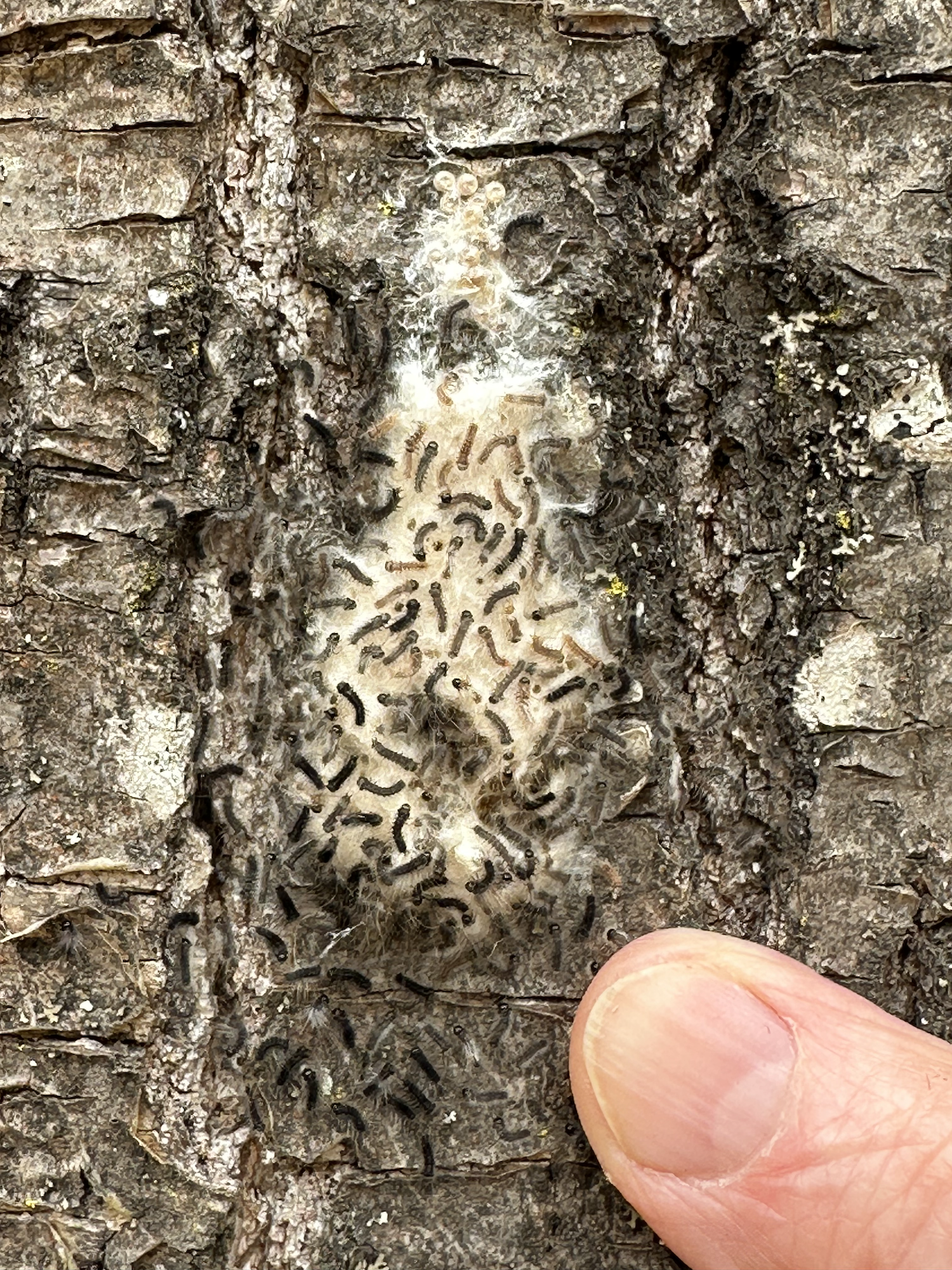An Update on the Wild Madeline Revival Project
/By Erik R Olson, Associate Professor of Natural Resources, Northland College
Northland students, Sydni Bennette and Bridget Stroede, checking camera traps and braving Island mosquitos last summer
We have had a long winter, and mosquito season is just around the corner. Last summer our research team, myself and my two research assistants, Sydni Bennette and Bridget Stroede, set out to install camera traps for the Wild Madeline Revival Project. Despite clouds of mosquitos chasing us through the woods, high humidity, and a good thunderstorm, we were able to install all the camera traps over a two-day window. We bushwhacked, sprayed plenty of mosquito repellent, ate food around a campfire in Big Bay State Park, enjoyed a sunset on the beach, bird watched, waded through wetlands, and used a road bike and van to shuttle ourselves between sites. While checking one camera, I saw a coyote busting through marshland vegetation with a gosling in its mouth — explaining the racket of honks I had heard only moments prior. The coyote ran within 30 yards of us, mouth full of gosling. Surprised by my presence it bolted deeper into the marsh. We definitely had an adventure.
In late August, my two research assistants drove to the island to check a subset of our camera traps. When we got the data back to the lab, we did what anyone with a trail camera would do, we looked at the photos and videos. Seeing what our trail cameras have captured is a bit like Christmas! And we were not disappointed: a curious doe, lazy bear cubs, a brave sandhill crane, a coursing coyote, a buck in velvet, owls and broad winged hawks hunting. Some of these photos and videos have already been posted to the Madeline Island Wilderness Preserve Facebook page and web site; if you haven’t seen them yet, go check them out.
What’s important is that these photos and videos also represent scientific data. After collecting the SD cards from the cameras, all contents are uploaded to our shared cloud storage site where we share data with our UW-Madison colleagues. The photos are then uploaded into the photo classification software called “Camelot”, where we then classify them and extract various forms of data from the images. During this school year, my research assistants have been busy classifying photos and videos from our August visit, as well as historical camera trap data from a project on the Island in 2011. These historical data along with our Wild Madeline results will allow us to assess how the wildlife community of the Island has changed over time and to ask a variety of scientific questions about wildlife in the broader Apostle archipelago.
Analyzing trail-camera photos of Madeline wildlife at Northland College
We had scheduled a trip to the island in March to check all camera traps, but the timing coincided with one of our major winter snowstorms. We are currently planning a camera check for some time in May when hopefully most of the snow will be gone. We will provide you with more photos and videos once we complete that camera check — stay tuned.
This project would not be possible without the support of a gracious donation from the Madeline Island Wilderness Preserve. We currently have funding to maintain the cameras for at least one more summer with potential to maintain them longer-term. This is important because camera trap projects require patience. We must wait while the cameras do their diligent work collecting photos and videos, and then we need time to turn those images into data.
You may see us out and about this year, especially this spring as we maintain the camera traps. If you do, please stop and say hello. We will continue sharing project updates and interesting wildlife stories on the MIWP Facebook page and website. If our initial observations tell us anything — it’s definitely wild out there!





























